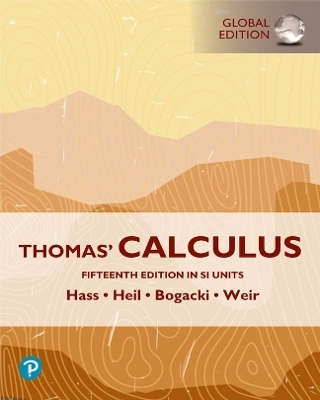
An Introduction to Nonlinear Partial Differential Equations, Second Edition
Wiley-Blackwell (Hersteller)
978-0-470-28709-5 (ISBN)
- Keine Verlagsinformationen verfügbar
- Artikel merken
Praise for the First Edition: "This book is well conceived and well written. The author has succeeded in producing a text on nonlinear PDEs that is not only quite readable but also accessible to students from diverse backgrounds." -SIAM Review A practical introduction to nonlinear PDEs and their real-world applications Now in a Second Edition, this popular book on nonlinear partial differential equations (PDEs) contains expanded coverage on the central topics of applied mathematics in an elementary, highly readable format and is accessible to students and researchers in the field of pure and applied mathematics. This book provides a new focus on the increasing use of mathematical applications in the life sciences, while also addressing key topics such as linear PDEs, first-order nonlinear PDEs, classical and weak solutions, shocks, hyperbolic systems, nonlinear diffusion, and elliptic equations.
Unlike comparable books that typically only use formal proofs and theory to demonstrate results, An Introduction to Nonlinear Partial Differential Equations, Second Edition takes a more practical approach to nonlinear PDEs by emphasizing how the results are used, why they are important, and how they are applied to real problems. The intertwining relationship between mathematics and physical phenomena is discovered using detailed examples of applications across various areas such as biology, combustion, traffic flow, heat transfer, fluid mechanics, quantum mechanics, and the chemical reactor theory.
New features of the Second Edition also include: Additional intermediate-level exercises that facilitate the development of advanced problem-solving skills New applications in the biological sciences, including age-structure, pattern formation, and the propagation of diseases An expanded bibliography that facilitates further investigation into specialized topics With individual, self-contained chapters and a broad scope of coverage that offers instructors the flexibility to design courses to meet specific objectives, An Introduction to Nonlinear Partial Differential Equations, Second Edition is an ideal text for applied mathematics courses at the upper-undergraduate and graduate levels. It also serves as a valuable resource for researchers and professionals in the fields of mathematics, biology, engineering, and physics who would like to further their knowledge of PDEs.
J. David Logan, PhD, is Willa Cather Professor of Mathematics at the University of Nebraska--Lincoln. He has authored several texts on elementary differential equations and beginning partial differential equations, including Applied Mathematics, Third Edition, also published by Wiley. Dr. Logan's research interests include mathematical physics, combustion and detonation, hydrogeology, and mathematical biology.
Preface. 1. Partial Differential Equations. 1.1 Partial Differential Equations. 1.1.1 PDEs and Solutions. 1.1.2 Classification. 1.1.3 Linear vs. Nonlinear. 1.1.4 Linear Equations. 1.2 Conservation Laws. 1.2.1 One Dimension. 1.2.2 Higher Dimensions. 1.3 Constitutive Relations. 1.4 Initial and Boundary Value Problems. 1.5 Waves. 1.5.1 Traveling Waves. 1.5.2 Plane Waves. 1.5.3 Plane Waves and Transforms. 1.5.4 Nonlinear Dispersion. 2. First-Order Equations and Characteristics. 2.1 Linear First-Order Equations. 2.1.1 Advection Equation. 2.1.2 Variable Coefficients. 2.2 Nonlinear Equations. 2.3 Quasi-linear Equations. 2.3.1 The general solution. 2.4 Propagation of Singularities. 2.5 General First-Order Equation. 2.5.1 Complete Integral. 2.6 Uniqueness Result. 2.7 Models in Biology. 2.7.1 Age-Structure. 2.7.2 Structured predator-prey model. 2.7.3 Chemotherapy. 2.7.4 Mass structure. 2.7.5 Size-dependent predation. 3. Weak Solutions To Hyperbolic Equations. 3.1 Discontinuous Solutions. 3.2 Jump Conditions. 3.2.1 Rarefaction Waves. 3.2.2 Shock Propagation. 3.3 Shock Formation. 3.4 Applications. 3.4.1 Traffic Flow. 3.4.2 Plug Flow Chemical Reactors. 3.5 Weak Solutions: A Formal Approach. 3.6 Asymptotic Behavior of Shocks. 3.6.1 Equal-Area Principle. 3.6.2 Shock Fitting. 3.6.3 Asymptotic Behavior. 4. Hyperbolic Systems. 4.1 Shallow Water Waves; Gas Dynamics. 4.1.1 Shallow Water Waves. 4.1.2 Small-Amplitude Approximation. 4.1.3 Gas Dynamics. 4.2 Hyperbolic Systems and Characteristics. 4.2.1 Classification. 4.3 The Riemann Method. 4.3.1 Jump Conditions for Systems. 4.3.2 Breaking Dam Problem. 4.3.3 Receding Wall Problem. 4.3.4 Formation of a Bore. 4.3.5 Gas Dynamics. 4.4 Hodographs and Wavefronts. 4.4.1 Hodograph Transformation. 4.4.2 Wavefront Expansions. 4.5 Weakly Nonlinear Approximations. 4.5.1 Derivation of Burgers' Equation. 5. Diffusion Processes. 5.1 Diffusion and Random Motion. 5.2 Similarity Methods. 5.3 Nonlinear Diffusion Models. 5.4 Reaction-Diffusion; Fisher's Equation. 5.4.1 Traveling Wave Solutions. 5.4.2 Perturbation Solution. 5.4.3 Stability of Traveling Waves. 5.4.4 Nagumo's Equation. 5.5 Advection-Diffusion; Burgers' Equation. 5.5.1 Traveling Wave Solution. 5.5.2 Initial Value Problem. 5.6 Asymptotic Solution to Burgers' Equation. 5.6.1 Evolution of a Point Source. 6. Reaction-Diffusion Systems. 6.1 Reaction-Diffusion Models. 6.1.1 Predator-Prey Model. 6.1.2 Combustion. 6.1.3 Chemotaxis. 6.2 Traveling Wave Solutions. 6.2.1 Model for the Spread of a Disease. 6.2.2 Contaminant transport in groundwater. 6.3 Existence of Solutions. 6.3.1 Fixed-Point Iteration. 6.3.2 Semi-Linear Equations. 6.3.3 Normed Linear Spaces. 6.3.4 General Existence Theorem. 6.4 Maximum Principles. 6.4.1 Maximum Principles. 6.4.2 Comparison Theorems. 6.5 Energy Estimates and Asymptotic Behavior. 6.5.1 Calculus Inequalities. 6.5.2 Energy Estimates. 6.5.3 Invariant Sets. 6.6 Pattern Formation. 7. Equilibrium Models. 7.1 Elliptic Models. 7.2 Theoretical Results. 7.2.1 Maximum Principle. 7.2.2 Existence Theorem. 7.3 Eigenvalue Problems. 7.3.1 Linear Eigenvalue Problems. 7.3.2 Nonlinear Eigenvalue Problems. 7.4 Stability and Bifurcation. 7.4.1 Ordinary Differential Equations. 7.4.2 Partial Differential Equations. References. Index.
| Erscheint lt. Verlag | 1.6.2008 |
|---|---|
| Verlagsort | Hoboken |
| Sprache | englisch |
| Gewicht | 10 g |
| Themenwelt | Mathematik / Informatik ► Mathematik ► Analysis |
| ISBN-10 | 0-470-28709-8 / 0470287098 |
| ISBN-13 | 978-0-470-28709-5 / 9780470287095 |
| Zustand | Neuware |
| Informationen gemäß Produktsicherheitsverordnung (GPSR) | |
| Haben Sie eine Frage zum Produkt? |
aus dem Bereich

